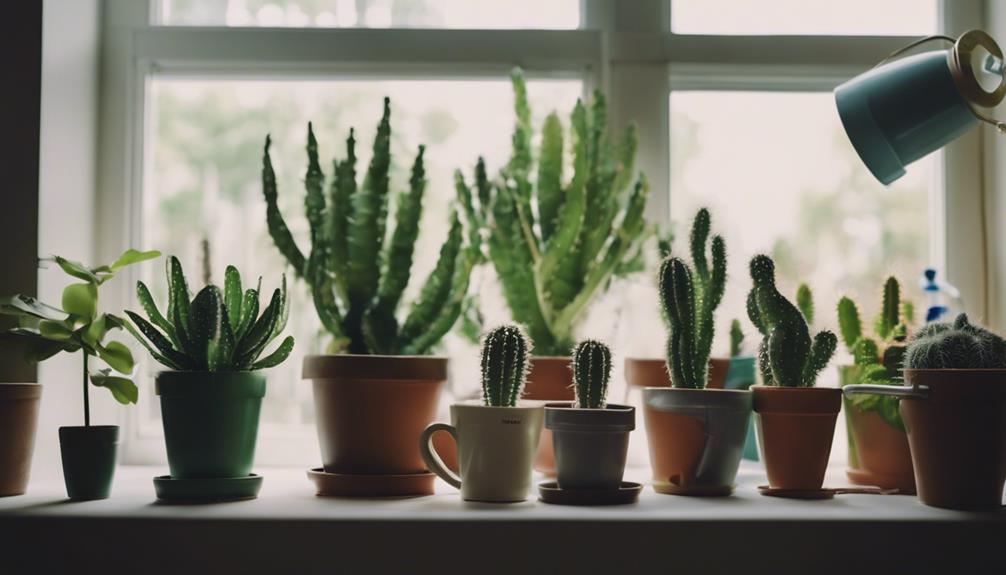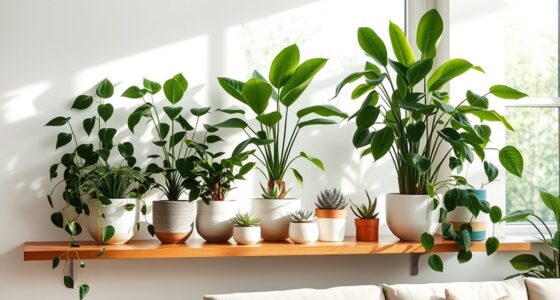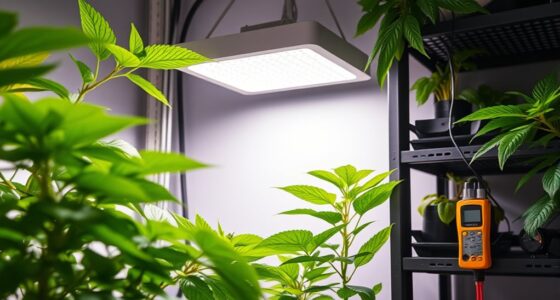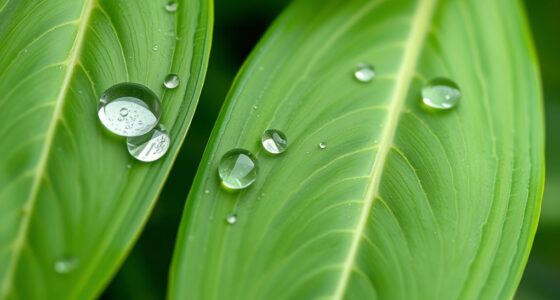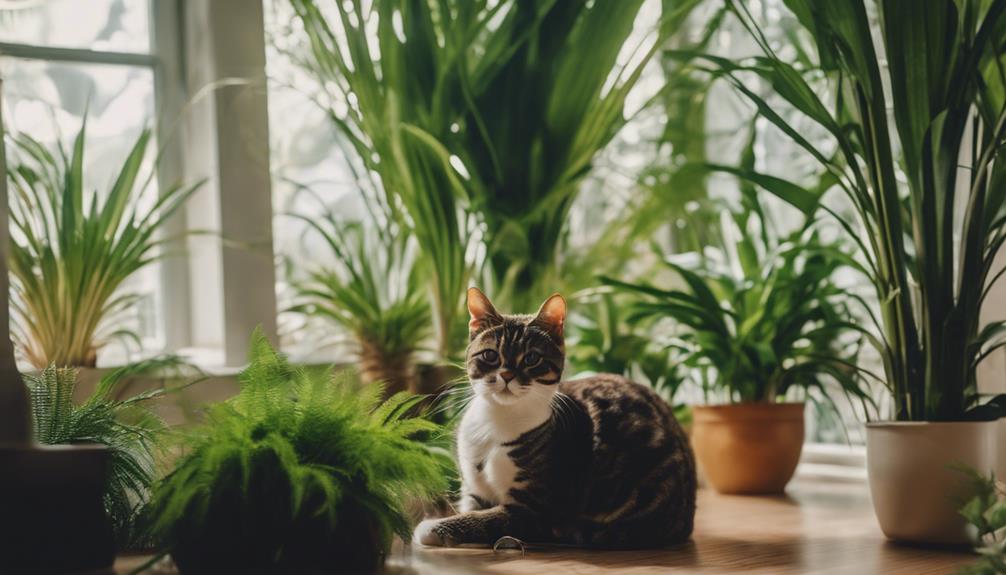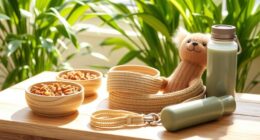Welcome to the ultimate XL Houseplant Hydration Cheat Sheet for thriving plants. Learn about proper watering to support growth and prevent issues like root rot and overwatering. Discover the Soak and Dry Method for best hydration and the importance of choosing the right soil mix with nutrients like compost or worm castings. Explore pot options for succulents to promote airflow and prevent excess moisture. Uncover ways to prevent root rot, propagate successfully, and recognize signs of underwatering versus overwatering. Adjust watering based on seasons and monitor soil moisture for healthy plants. Find out more about maximizing plant hydration for lush greenery.
Key Takeaways
- Use the Soak and Dry Method for balanced watering.
- Select pots with proper drainage to prevent overwatering.
- Monitor humidity levels and adjust watering accordingly.
- Choose well-draining soil mixes with nutrients for plant health.
- Recognize signs of underwatering and overwatering to adjust watering practices.
Importance of Proper Hydration
Understanding the importance of proper hydration is vital for the thriving of houseplants. Watering plays a significant role in plant health, as it supports essential functions like nutrient absorption and photosynthesis. Without adequate hydration, plants can exhibit signs of distress such as wilting, yellowing leaves, and stunted growth, indicating a lack of water.
On the other hand, overwatering can lead to issues like root rot, fungal infections, and nutrient leaching, highlighting the importance of balanced watering practices in houseplant care. Different plant species have varying hydration needs, emphasizing the necessity of understanding individual requirements to ensure optimal growth and health.
Monitoring soil moisture levels, adjusting watering frequency based on plant type and environmental conditions, and using appropriate watering techniques are all key aspects of maintaining proper hydration for houseplants. By prioritizing watering as an essential component of houseplant care, we can help our plants thrive and flourish.
Soak and Dry Method Explained
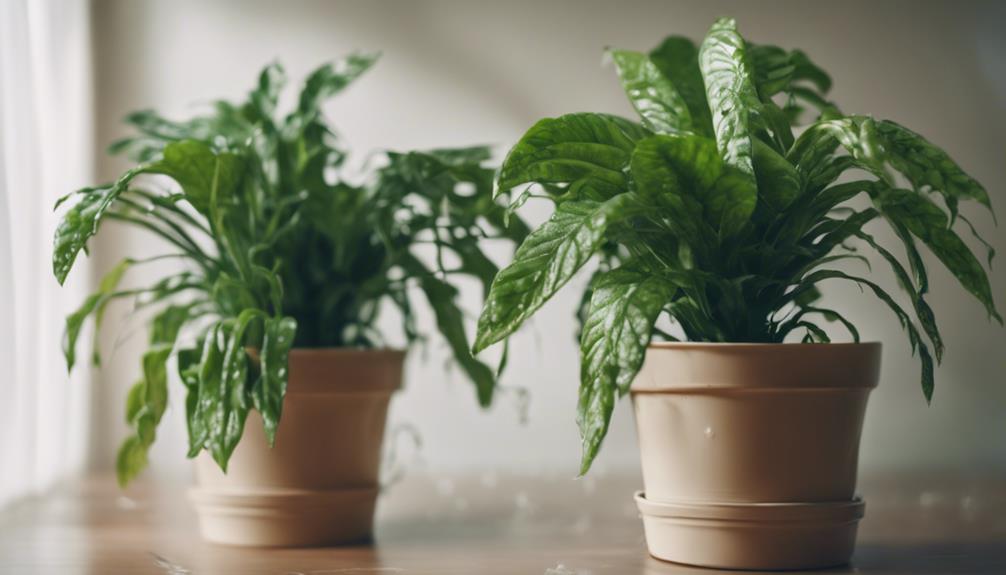
When using the Soak and Dry method for watering houseplants, it's essential to thoroughly soak the plant roots until the soil is saturated. By allowing the soil to dry out completely between waterings, we can prevent issues like root rot and promote healthy root growth.
Monitoring the moisture level in the soil is key to determining when it's time to water again, ensuring our plants thrive in their environment.
Soak Plant Roots
Thoroughly soaking plant roots and allowing the soil to dry out completely is the essence of the soak and dry method for houseplant hydration. This technique involves establishing a specific watering schedule where you saturate the roots with water, then let the soil dry before the next watering session.
By employing this method, you can prevent overwatering, a common issue that can lead to root suffocation and rot. Succulents and cacti particularly benefit from this approach due to their low water needs and preference for well-draining soil. The soak and dry method mimics the natural drought cycles these plants experience in the wild, promoting healthier root growth and reducing the likelihood of moisture-related problems.
Implementing this strategy consistently can help maintain ideal hydration levels for your houseplants, ensuring they thrive in a controlled and balanced environment.
Monitor Soil Moisture
To effectively implement the soak and dry method for houseplant hydration, regularly monitoring soil moisture is crucial. By checking the soil moisture levels, you can prevent overwatering and ensure the health of your plants. Insert your finger into the soil; if the top inch feels dry, it's time to water. Overwatering can lead to root rot and other issues, underscoring the importance of monitoring soil moisture. Adjust your watering frequency based on your plant's needs and the surrounding environment to maintain ideal growth conditions.
| Monitor Soil Moisture Tips | Signs of Overwatering | Preventive Actions |
|---|---|---|
| Check soil weekly | Yellowing leaves | Use well-draining soil |
| Feel top inch for dryness | Wilting or drooping | Ensure pots have drainage holes |
| Water only when dry | Moldy or smelly soil | Avoid saucers filled with water |
Choosing the Right Soil Mix
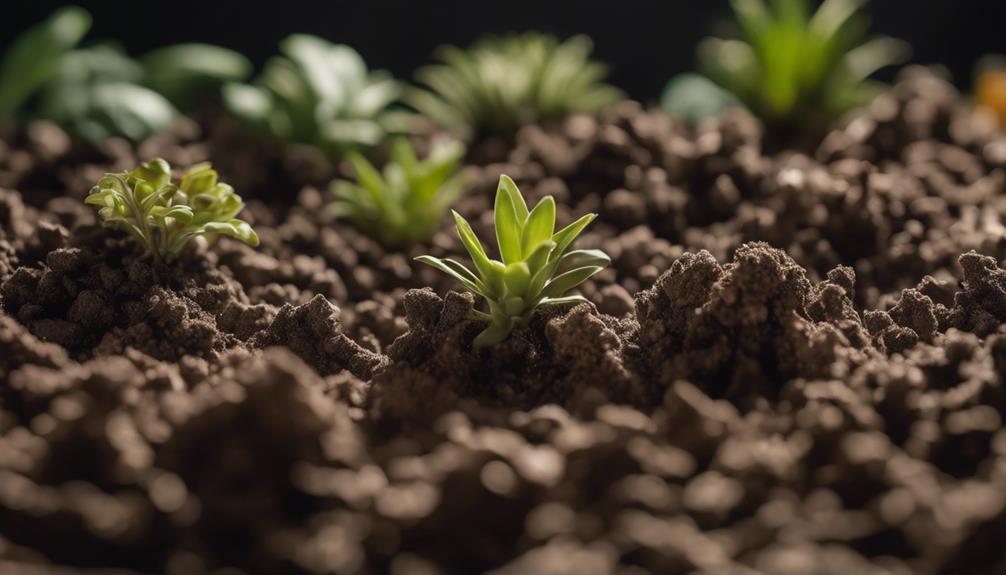
For essential plant health, selecting a soil mix containing perlite or vermiculite to enhance aeration and drainage is vital. These components create air pockets in the soil, preventing compaction and allowing roots to breathe.
When choosing a soil mix, consider incorporating compost or worm castings to provide necessary nutrients for your houseplants. Most indoor plants prefer slightly acidic to neutral pH levels in their soil, which promotes healthy root development and nutrient absorption.
To guarantee you maintain the correct pH levels, using a pH meter can be helpful in monitoring and adjusting as needed. A nutrient-rich and well-draining soil mix is important for supporting overall plant health and growth.
Best Pots for Succulents
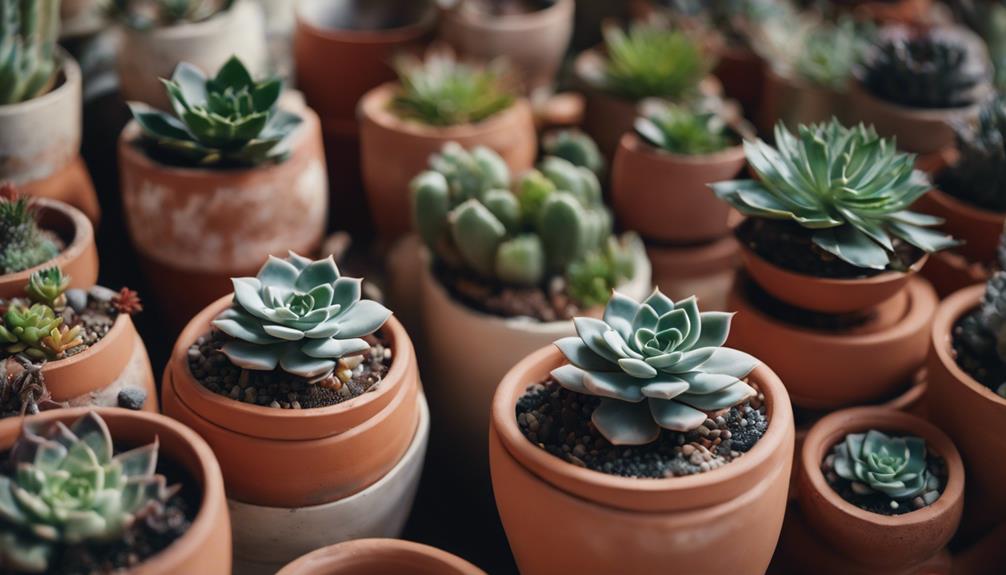
Terracotta pots are widely considered an excellent choice for succulents due to their ability to absorb excess moisture and prevent waterlogging. These porous pots help prevent overwatering, which is a common issue for these low-maintenance plants.
Ceramic pots with drainage holes are also ideal for succulents as they promote airflow and prevent root rot. The presence of drainage holes allows excess water to escape, ensuring that the plants' roots don't sit in stagnant water.
For those looking to add a touch of style to their succulent display, geometric pots offer a trendy and modern look while still providing adequate drainage.
Hanging pots are another great option for succulents that benefit from good air circulation. Not only do hanging pots look decorative, but they also keep the plants well-ventilated.
Lastly, self-watering pots with water reservoirs are convenient for busy plant owners. These pots help prevent overwatering by allowing the plants to absorb water as needed, making them a great choice for succulents that are more sensitive to excess moisture.
Preventing Overwatering and Root Rot
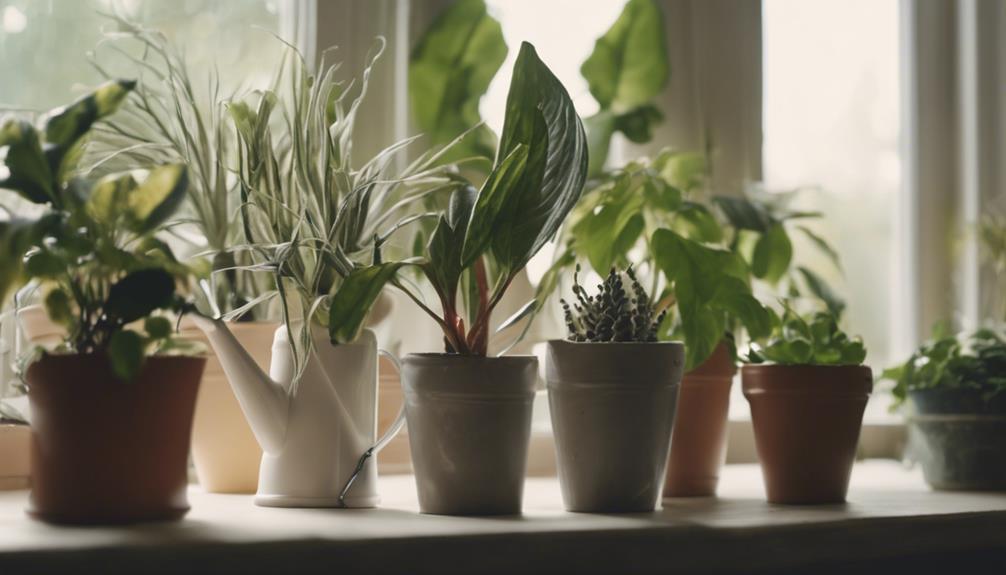
Properly managing watering frequency and ensuring adequate drainage are essential steps in preventing overwatering and root rot in houseplants. Overwatering can lead to root rot, a common issue where plant roots decay due to excessive moisture.
This lack of oxygen in waterlogged soil inhibits nutrient absorption, causing symptoms like yellowing leaves, wilting, and a foul odor from the soil. To prevent root rot, allow the soil to dry out between waterings and ensure pots have proper drainage.
Utilize tools like a Houseplant Care Planner or a Watering log to track watering schedules and soil moisture levels. By monitoring these factors, adjustments can be made to prevent overwatering and subsequent root rot.
Monitoring Watering Frequency
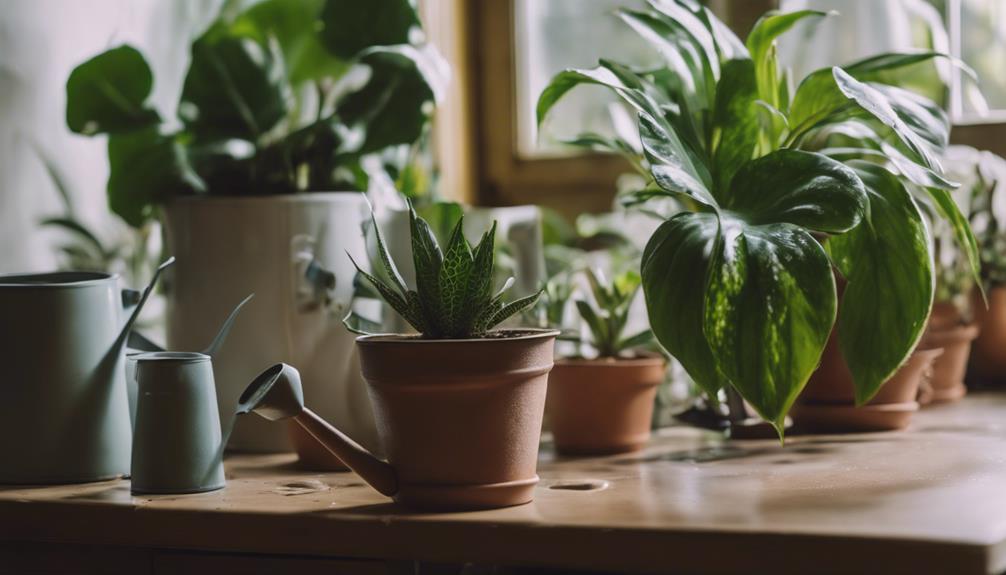
To effectively monitor watering frequency for houseplants, utilize a plant watering tracker to maintain a consistent schedule. These tools, such as digital plant care organizers or printable Plant Watering Schedule Charts, can help you stay organized and track the hydration needs of your plants efficiently.
Additionally, consider checking the soil moisture level by inserting your finger to the first knuckle to determine if watering is required. Factors like plant type, pot size, and environmental conditions should also be taken into account when adjusting watering frequency.
Keeping a record of when you water each plant using a House Plant Care Tracker is beneficial for tracking patterns and ensuring your plants receive adequate hydration. By incorporating these methods and tools into your plant care routine, you can effectively monitor watering frequency and help your houseplants thrive.
Propagation Tips for Success
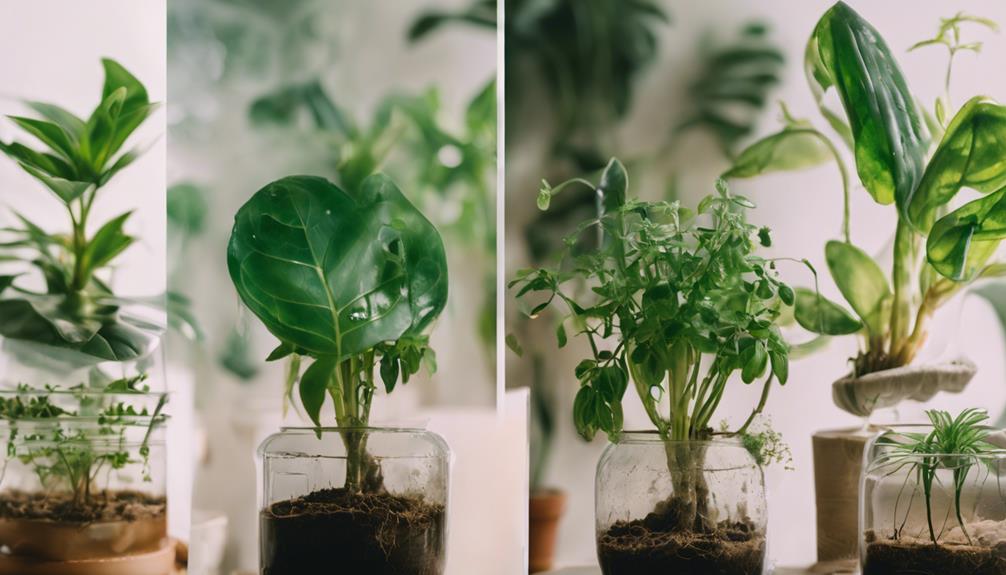
When it comes to successful propagation of your houseplants, focusing on proper cutting techniques, ideal humidity levels, and selecting the right rooting medium is crucial.
By mastering these essential points, you can set the stage for healthy growth and thriving new plants.
Let's explore these tips further to guarantee your propagation efforts yield the best results possible.
Proper Cutting Techniques
We always use sharp, sterile scissors or pruning shears for clean cuts during propagation to guarantee successful plant growth. When it comes to cutting techniques, making a precise 45-degree angle cut is vital. This angled cut not only aids in water absorption but also helps minimize the risk of rotting.
Additionally, it's important to remove any excess leaves on the cutting. By doing so, you reduce water loss and allow the plant to focus its energy on root development.
After making the cut, allow the cutting to callus over for a few days before planting it in well-draining soil. This step helps prevent the cutting from rotting and promotes healthy growth.
Once planted, make sure the cutting is placed in a warm, bright location with indirect sunlight. This environment is ideal for successful propagation and encourages the growth of strong, healthy roots.
Ideal Humidity Levels
Maintaining ideal humidity levels around 40-60% is essential for successful plant propagation and fostering robust root development. Adequate humidity creates a favorable environment for healthy propagation by promoting root growth and overall plant vitality.
To achieve these best humidity levels, consider grouping plants together or introducing a humidifier in your propagation areas. These methods help prevent excessive moisture loss from the plants, which is critical for their establishment and growth.
Monitoring and adjusting humidity levels based on the specific needs of your plants is key to ensuring successful and healthy propagation outcomes. By paying attention to humidity levels and making necessary adjustments, you can provide an environment that encourages strong root development and robust growth in your propagated plants.
Rooting Medium Selection
To guarantee successful propagation, selecting the right rooting medium is essential for promoting healthy root development in your plants. When choosing a rooting medium, opt for options like perlite, vermiculite, or a peat moss and perlite mix that provide excellent drainage. These materials help prevent waterlogging, which can lead to root rot and hinder the growth of your propagated plants.
It's important to avoid using overly moisture-retentive soil, as it can suffocate the roots and impede their development. Consider incorporating a rooting hormone into the medium to stimulate quicker root growth and increase the chances of successful propagation. Additionally, using a sterile rooting medium is vital to prevent the introduction of harmful pathogens that could harm your cuttings.
Make sure that the rooting medium remains consistently moist but not waterlogged to create an ideal environment for healthy root formation in your propagated plants. By selecting the right rooting medium, you set the foundation for successful plant propagation.
Signs of Underwatering Vs. Overwatering
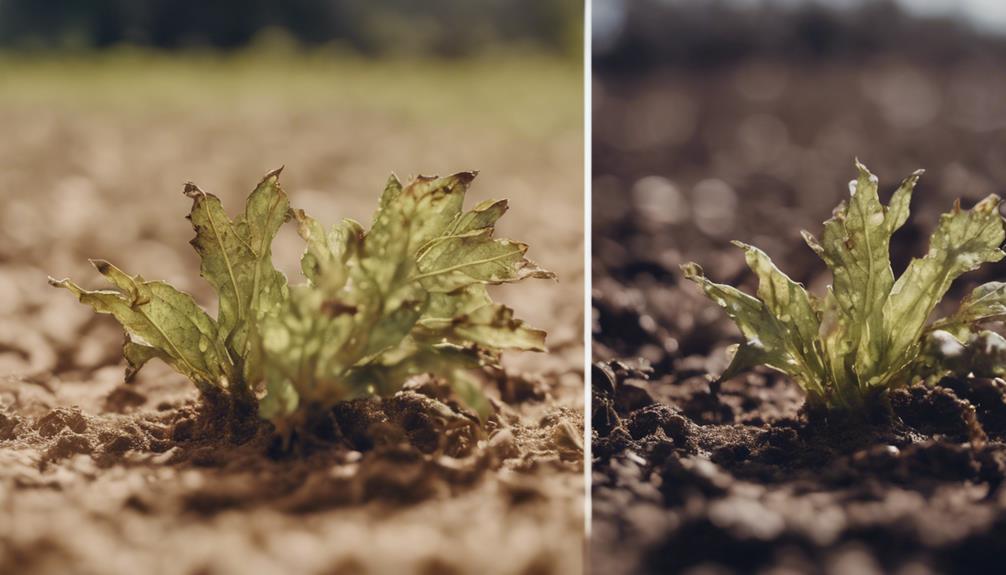
In houseplants, differentiating signs of underwatering from overwatering is crucial for maintaining their health and vitality. Underwatering can lead to wilting, dry soil, and yellowing leaves as the plant lacks the necessary moisture for growth.
On the other hand, overwatering manifests through yellowing leaves, mushy stems, and excessively wet soil that can cause root rot due to waterlogged conditions.
To determine the watering needs of your plants, consider monitoring their weight by lifting the pot. This method helps gauge when to water, ensuring proper hydration without drowning the roots. Additionally, utilizing a moisture meter can accurately assess soil moisture levels, aiding in preventing both underwatering and overwatering.
Adjusting Watering in Different Seasons
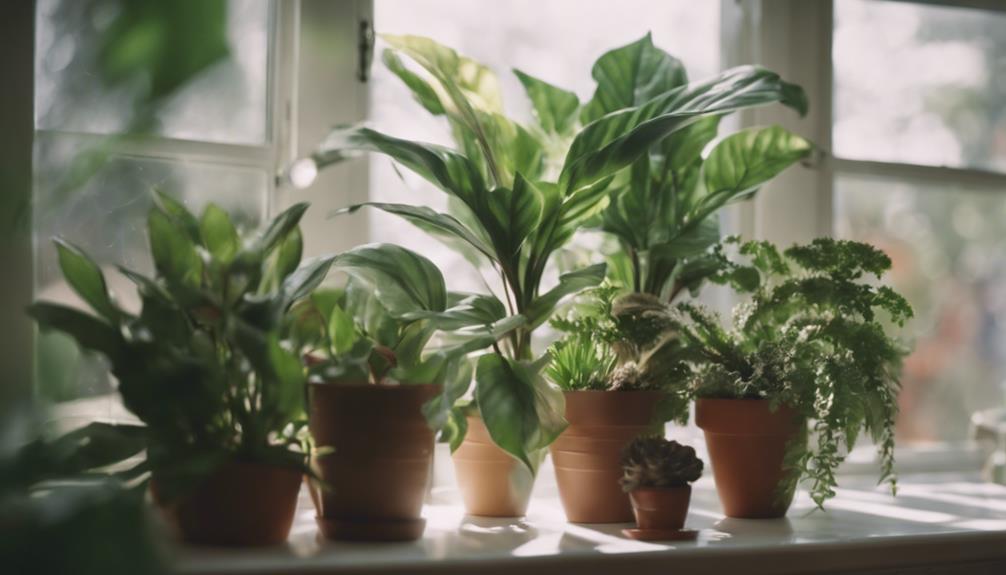
During different seasons, the water needs of our houseplants can fluctuate significantly. Spring and summer often demand more frequent watering to accommodate growth and higher temperatures.
Conversely, fall and winter may require less watering as plants enter a dormant phase with reduced growth. Understanding these seasonal changes is essential to maintaining ideal hydration levels for our beloved green companions.
Seasonal Watering Changes
Our approach to watering our houseplants shifts with the changing seasons, reflecting the varying needs of our green companions. Seasonal changes prompt adjustments in our watering schedule to accommodate the shifting requirements of our plants.
During warmer seasons or active growth periods, we increase watering to make sure our plants stay hydrated and thrive. Conversely, in cooler seasons or during dormancy, we reduce watering to prevent overwatering and the risk of root rot.
Monitoring soil moisture levels is essential in determining the appropriate watering frequency for each season. Regularly checking the soil moisture helps us gauge when our plants need watering, preventing both under and overhydration. Consider using a moisture meter for accurate assessments of soil moisture, guiding you in making informed decisions about seasonal watering adjustments.
Weather Impact on Hydration
As we navigate the changing seasons, the impact of weather on hydration becomes an important consideration in adjusting our houseplant watering routines. Factors such as humidity levels and indoor temperatures play crucial roles in determining how often our plants need watering to thrive. In hot summer months, plants may thirst for more water due to increased evaporation rates caused by higher temperatures. Conversely, during colder winter seasons, plants tend to require less water as they enter a period of dormancy.
To help you understand how weather impacts plant hydration, we've compiled a handy table below:
| Weather Condition | Impact on Hydration | Recommended Action |
|---|---|---|
| Hot and Dry | High evaporation rates, plants need more water | Increase watering frequency |
| Cold and Humid | Lower evaporation, plants need less water | Reduce watering intervals |
| Fluctuating Weather | Inconsistent hydration needs | Monitor soil moisture regularly and adjust accordingly |
Plant Needs by Season
To effectively adjust watering schedules for different seasons, understanding the varying needs of plants based on seasonal changes is essential. Houseplant watering schedules should be adapted to accommodate the shifting requirements of plants throughout the year.
Seasonal changes play a significant role in determining how much water your plants need. Warmer months often demand more frequent watering due to increased evaporation rates and higher plant activity. Conversely, in winter, when growth slows down, plants may require less water, so it's vital to reduce watering to prevent overhydration.
Monitoring soil moisture levels regularly is key to ensuring that plants receive adequate hydration regardless of the season. Factors like humidity levels and temperature fluctuations should also be considered when adjusting watering routines to meet the specific needs of your houseplants.
Troubleshooting Common Watering Issues
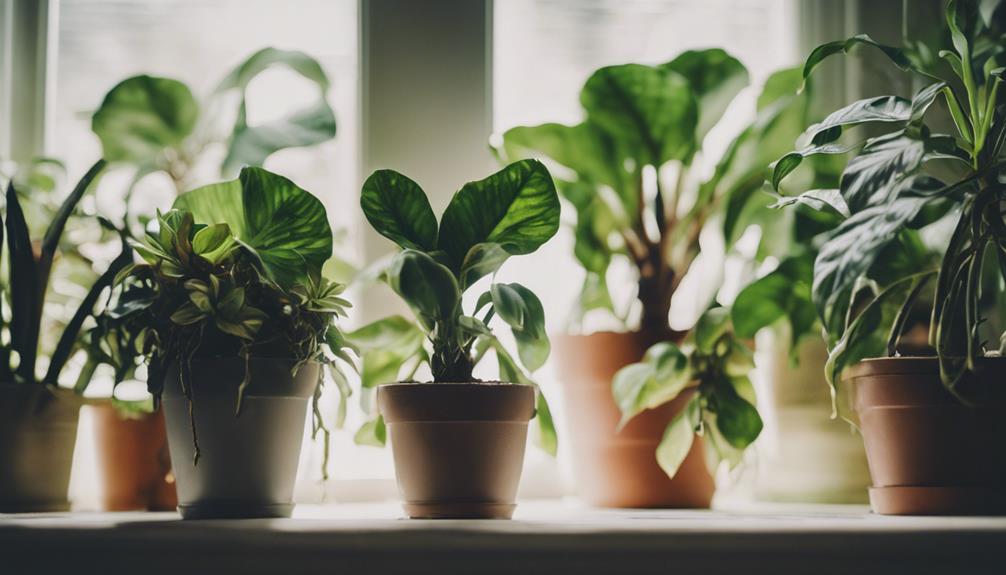
Identify and address common watering issues to promote healthy plant growth and development. Proper house plant care involves maintaining a consistent watering schedule tailored to each plant's needs.
Overwatering is a common problem that can lead to root rot, yellowing leaves, and wilting plants. To avoid this issue, make sure your plants aren't sitting in water and allow the soil to dry out slightly between waterings.
On the other hand, underwatering may cause dry, crispy leaves, stunted growth, and leaf drop. Adjusting your watering frequency based on factors such as pot size, plant type, and environmental conditions is crucial.
Utilizing a moisture meter can be a helpful tool in determining when your plants need water. By paying attention to these common watering issues and making adjustments as needed, you can provide your houseplants with the care they require for healthy growth.
Frequently Asked Questions
What Is the Watering Hack for Indoor Plants?
When it comes to indoor plants, there are various watering hacks that can make the process more efficient. One option is to use self-watering systems or automatic watering stakes to ensure consistent hydration. Plant misters, watering bottles, and funnels are handy accessories that can make watering easier.
Digital plant care trackers are useful tools for monitoring watering routines and ensuring your plants receive the right amount of water. Traditional tools like metal watering cans or self-watering planters are also reliable options for manual watering.
Another helpful tip is to utilize the iPhone's plant lookup feature, which can quickly identify plants and provide care information. This feature can enhance your watering practices by ensuring you are meeting the specific needs of each plant.
How Do I Know How Much Water to Give My Houseplant?
When determining how much water to give your houseplant, consider factors like plant type, size, and environment.
Check soil moisture by feeling the top inch before watering to prevent issues like root rot or wilting.
Remember, different plants have varying water needs, so it's essential to research individual care guides for specific advice.
Using self-watering systems or tools can help maintain consistent hydration levels.
Always aim for balanced watering to keep your plant healthy and thriving.
How Many Times a Week Should You Water Indoor Plants?
When it comes to watering indoor plants, the frequency can vary based on factors like plant type, size, and environment.
Most plants need water when the top inch of soil is dry to the touch. It's important to avoid overwatering to prevent issues like root rot.
Some plants may need watering once a week, while others, like succulents, can go longer between waterings, typically every 14-21 days.
Adjusting the watering schedule based on soil moisture levels is key for healthy plants.
Should You Water House Plants From the Top or Bottom?
For us, watering house plants from the bottom can be a game-changer. It's like giving them a VIP ticket to hydration town! By allowing roots to slurp up water directly, we're helping our leafy friends stay happy and healthy.
Plus, it cuts down on the risk of soggy leaves or fungal parties. So, when in doubt, bottom watering is the way to go for a root-to-tip hydration extravaganza!
Are the XL Houseplants on the Cheat Sheet Safe for Dogs?
Yes, the XL houseplants on the cheat sheet are large indoor plants safe for dogs. These plants have been carefully selected and are non-toxic to pets, ensuring the safety of your furry companions. You can confidently add these stunning greenery to your home without worry.
Conclusion
To sum up, keeping your houseplants properly hydrated doesn't have to be a challenging task. By following our simple tips for watering, soil, pots, and troubleshooting, you'll be well on your way to having thriving indoor greenery.
Remember, a little love and attention go a long way in keeping your plants happy and healthy. So don't stress, just keep an eye on your plants, adjust as needed, and enjoy the beauty they bring to your home.
Happy hydrating!
